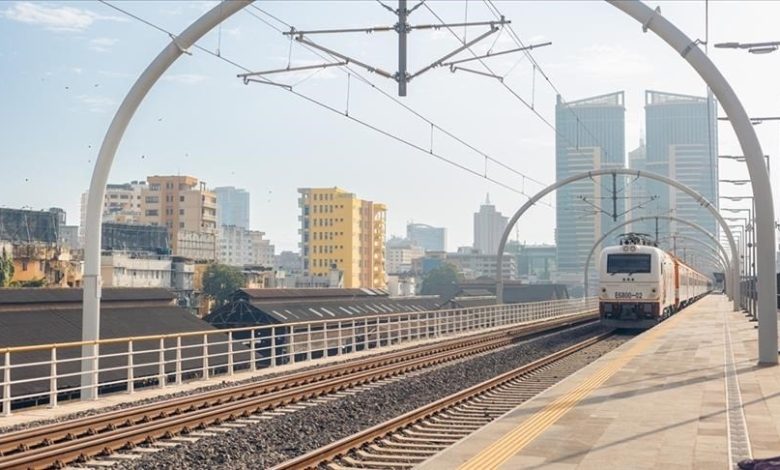Tanzania Launches Eastern Africa’s 1st Electric Train

Tanzania launched its first electric train on Saturday, which transported 1,400 passengers from the coastal city of Dar es Salaam to Morogoro in the west on its maiden journey, covering a 300-kilometer (186-mile) distance.
With plans for the second segment nearly complete, Türkiye-based company Yapi Merkezi, responsible for four of the five sections of Tanzania’s extensive railway construction project spanning over 1,000 kilometers, has successfully finished the first segment.
Yapi Merkezi’s Project Manager M. Firat Aygen underlined the transformative impact of the newly inaugurated railway, describing it as the initial step towards a broader transportation revolution in the region.
Tanzania Railways Corporation’s General Manager Masanja Kadogosa highlighted the project’s significance in fostering economic growth and enhancing transportation efficiency throughout Tanzania and Eastern Africa.
With a shimmering facade of sky-blue glass panels, the Standard Gauge Railway Station in Tanzania’s commercial hub Dar es Salaam looks more like an opulent airport terminal than a railway facility.
This architectural marvel, meticulously designed with passengers’ comfort in mind, boasts state-of-the-art ticketing counters and plush waiting lounges equipped with charging ports and other amenities.
The station serves the Standard Gauge Railway (SGR) electric train built by Turkish company Yapi Merkezi, a project that represents a significant leap forward for the East African nation’s transportation infrastructure.
The electric train, a project worth nearly $2 billion, is seen as an immense boost to domestic connectivity, trade and economic opportunities with neighboring landlocked countries like Uganda and Rwanda.
The SGR’s entire route will run from Dar es Salaam to Mwanza, a port city on the shore of Lake Victoria, and Kigoma, a city on the northeastern shores of Lake Tanganyika, near the border with Burundi and the Democratic Republic of Congo.
That route will cover a total of nearly 1,300 kilometers (around 810 miles).



